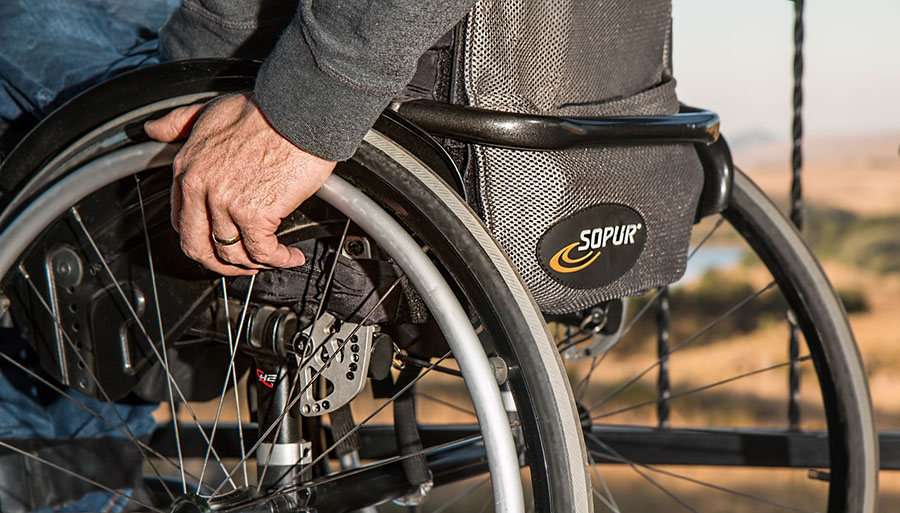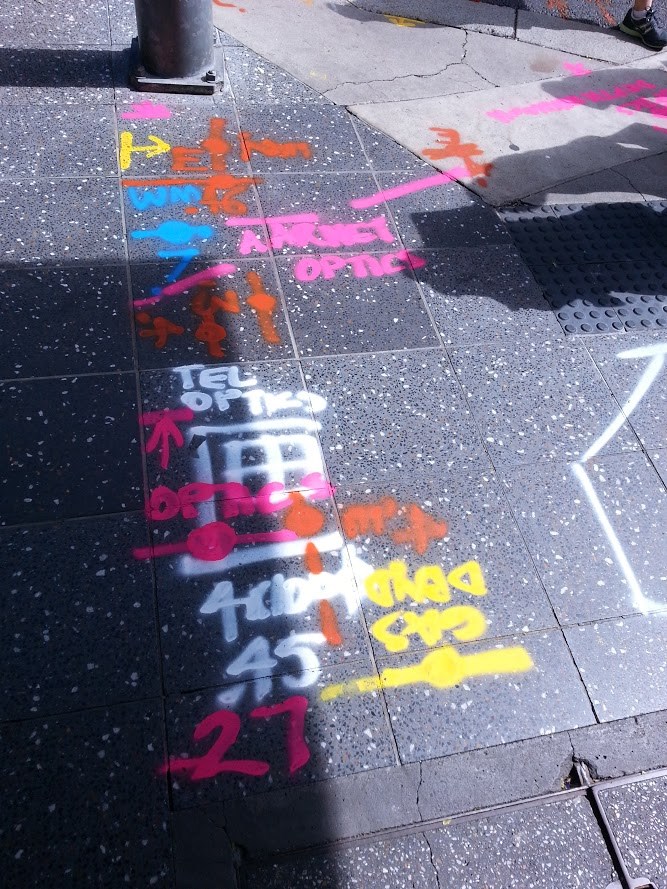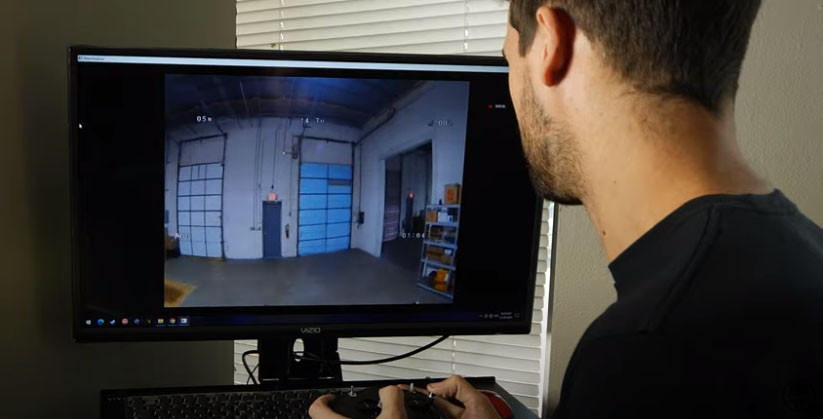With a much-anticipated linchpin agreement with AT&T and FirstNet sealed this week, Siyata Mobile Inc. (SIM:TSX.V; SYATF:OTCQX; WK3D:GR) has catapulted itself into pole position of the first responder and commercial fleet management market. In this arena there is now a sweeping transition from the decades-old two-way CB radio to the new functionally and economically superior—and safer—Push-to-Talk over Cellular (PoC) cellular systems. It is the latter where Montreal-based Siyata's innovative Uniden UV350 in-vehicle smartphone will become a mission-critical component of a government initiative that is worth $100 billion to AT&T over the next 25 years. For Siyata, which to this point has a virtual monopoly as the only AT&T-approved in-vehicle mobile device on the FirstNet Network, there is an estimated 3.5 million first responder vehicles for the two partners to pursue.
"Today's agreement makes SIM.V a screaming 'buy' in my book."
The AT&T FirstNet approval offers a resounding endorsement of Siyata's high in-vehicle and functionally superior unified device for an equally sizable commercial market. This pioneering technology is set up for use in trucking and other vehicle fleets in industries like service delivery, waste management, school buses, oil and gas, and industrial transportation, as well as in mission critical environments such as public safety and first responder networks.
Based on the expectations of the AT&T FirstNet-endorsed UV350 and the replacement of outdated legacy 3G products to newer 4G/LTE products lines, Siyata expects its top-line revenue to jump considerably.
Meanwhile, the stock has been traded down by impatient investors from an April high of $0.60 to a May low of $0.40—so today's agreement makes SIM.V a screaming "buy" in my book.
While the AT&T FirstNet agreement was long expected, the sheer persistence of Siyata to execute its longer-term strategy looks like it could pay off in droves. The company's UV350 is the industry-leading technology for on-board push-to-talk over cellular (PoC) technology and Siyata is currently the only manufacturer of 4G/LTE in-vehicle PoC communication hardware. The company estimates there is nearly a $10 billion market in commercial and public safety fleet communications to pursue in North America alone.
"Given the company's strong growth prospects, we believe this may be a good entry point for investors." -Siddharth Rajeev, Analyst
The company plans to grow sales rapidly in the coming years with a goal to sell over 100,000 units in 2022, which would translate into over $100 million in revenue and over 25% EBITDA."
First a little history. AT&T was awarded the First Responder Network Authority contract in March of 2017, beating out another Tier 1 telco. The Authority is the federal U.S. government entity created to manage the build-out of the first responder network. AT&T is tasked with building a national broadband network that will be used by police, firefighters and emergency medical services. It will cover all 50 states, five U.S. territories and Washington D.C.
While in its 2017 announcement AT&T pinned the value of the first five years to build-out the network at $6.5 billion, FBO.gov put a $100 billion price tag on the contract over its 25-year life. According to WT Business Beat, "Over the life of the 25-year agreement, AT&T will invest $40 billion into the network."
Up to this point, first responder Push-to-Talk (PTT) technology was basically owned by Motorola in North America. Meanwhile, Verizon was the staple on the cellular side for the mission-critical and first responder communications. That means most first responders had two networks along with other applications running on their dashboard such as navigation, fleet management and location tracking. One network was for mission critical two-way discussion on fail-proof PTT hardware and another for their own cellular-driven communications and other applications. The First Responder Network Authority's mandate was to unify all devices onto one nationwide cellular-based platform. In this context, Siyata developed a more cost effective, easier to scale solution, with an all-in-one device that is much safer for drivers with less distraction on the dashboard.
Motorola's PTT status held until 2012 when Google acquired the company and had no interest in its commercial fleet and first responder hardware. Google was purely interested in Motorola's consumer markets division and not its enterprise LMR solutions. That opened the door for new players to fill an abandoned market, particularly Siyata, which already made significant inroads for fleets on the then standard of 3G technology, in a company led by ex-Motorola alumni. Siyata to date has sold more than 200,000 rugged cellular devices for commercial fleets, mostly in Israel, Canada and Europe.
In its six-year history, the lion's share of revenue for Siyata came from these rugged cellular devices and cellular signal boosters. As a manufacturer, the company sells its solutions to cellular operators and their distributors, who in turn sell to their enterprise customers. To address the unmet need of in-vehicle devices in the U.S. for first responders, Siyata transitioned its legacy products onto a 4G/LTE network, led by the company's UV350.
 Siyata reached a significant milestone this year when the company launched the UV350 on Canada's Bell Network, but that agreement pales in comparison to the AT&T FirstNet agreement. A U.S. federal government $100-billion initiative, the AT&T FirstNet agreement makes for a highly motivated reseller in a massive market. The kicker is that Siyata has another Tier I telco agreement in the works, and given its persistence with AT&T, there is a high degree of confidence that this second agreement could be announced within a few months.
Siyata reached a significant milestone this year when the company launched the UV350 on Canada's Bell Network, but that agreement pales in comparison to the AT&T FirstNet agreement. A U.S. federal government $100-billion initiative, the AT&T FirstNet agreement makes for a highly motivated reseller in a massive market. The kicker is that Siyata has another Tier I telco agreement in the works, and given its persistence with AT&T, there is a high degree of confidence that this second agreement could be announced within a few months.
"FirstNet devices and modules go through extensive review, so First Responders can be confident that Siyata's UV350 meets the highest standards for reliability, security and performance," said Bob Sloan, Chief Operating Officer, FirstNet program at AT&T. "The more tools public safety has access to on their network, the more we can help them achieve their mission. We are happy to be the first U.S. cellular carrier to launch Uniden's NextGen Vehicle Communicator—an innovative in-vehicle mounted phablet. We believe it will be an excellent answer for both existing and newly migrating FirstNet subscribers seeking an in-vehicle communication device."
The tailwind behind the sweeping demand for push-to-talk over cellular (PoC) technology involves superior functionality and cost. Traditional land mobile radio (LMR) systems require significant capital to develop and roll-out, but expenditures are required to acquire LMR devices and receive coverage from operators and dispatcher. By comparison there is no capital required for the national build-out of a PoC network, which is provided by a telecommunications carrier, and with new technology PoC devices are cheaper per unit.
In North America, fleet communications are a $9.7 billion market. This is based on Q3-2018 stats from the U.S. Department of Transportation, which reports there are 8.63 million automobiles and trucks and fleets in the U.S. At a price of $1,000 per unit (making the math really easy!), that equates to an $8.63 billion market in the U.S. According to Statistic Canada, 1.08 million vehicles registered nationwide were in excess of 4,500 kg, assuming trucks, vans and other potential fleets, so accordingly this could add another billion to the market potential, for a rounded figure near a $10 billion opportunity to PoC for Siyata on the bleeding edge of 4G/LTE in-vehicle PoC communication hardware.
Based on the expectations of the AT&T FirstNet-endorsed Siyata UV350 and the replacement of outdated 3G products to new 4G/LTE product lines, Siyata expects its top-line revenue to increase considerably.
That sentiment is echoed by analyst Siddharth Rajeev in a May 31 Fundamental Research report that states, "Given the company's strong growth prospects, we believe this may be a good entry point for investors." Fundamental Research is maintaining a BUY recommendation for SIM.V and a target of CA$1.23, which currently trades in the CA$0.40 to CA$0.50 range.
The company has suffered as of late while it is upgrading and transitioning its legacy 3G rugged phone products and working towards this milestone agreement. The AT&T agreement is a highly anticipated moment for shareholders and industry watchers alike including:
Robert McWhirter, president of Selective Asset Management, on January 16 on BNN Bloomberg said, "…push-to-talk allows you to use a cell network (PoC) instead of the older (PTT/LMR) network being phased out and we think there is good opportunity for (SIM.V) in the coming year."
Fabrice Taylor, publisher of the President's Club Investment Letter, who on January 11, 2019, on BNN Bloomberg commentary shared his top pick: "The big score (for SIM.V) is getting something in the U.S. I think they're close. If that happens, the potential revenues are in the billions, and if they get even a piece of that, given the margins, the stock could multiply as well."
And Peter Imhof of AGF Investments gave his outlook for shares of Siyata Mobile on January 23, also on BNN Bloomberg, commenting, "Contracts that we thought that would have come to fruition have taken longer… but I think they do have a good line of growth over the next couple of years."
Siyata CEO Marc Seelenfreund expects Siyata's virtual monopoly on the "PoC" market for first responders and other emergency vehicles to hold for at least a few years. "The Uniden UV350 is the first and only 4G/LTE in-vehicle cellular smartphone in the world," he said. "This segment alone is not big enough for other large telcos to concern themselves, while we are way ahead of any competition on the 4G/LTE platform." After leaping through the rigorous hoop of AT&T FirstNet, he feels Siyata is leaps and bounds ahead of any competition. "If you asked me two-and-a-half years ago what the barriers to entry were, I would have thought they were nowhere near what they became."
In one significant agreement, Siyata has moved into the pinnacle arena for the in-vehicle fleet communications market with the UV350. The company is wise to take advantage of its head start and hit the ground running hard on the AT&T platform, meanwhile it looks like another Tier 1 telco could be right behind it. After taking the bold steps to stay committed to the long game in a seemingly punishing market, it looks like Siyata has developed the right next-generation product for a potential $10 billion dollar market. It now looks to be the opportune moment to jump back in on the Siyata 4G/LTE bandwagon.
Knox Henderson is a journalist and capital markets communications consultant. He has advised for a broad range of small cap companies in the resource, life sciences and technology sectors for more than 25 years.
[NLINSERT]Disclosure:
1) Knox Henderson: I, or members of my immediate household or family, do not own shares of the following companies mentioned in this article: Siyata Mobile, AT&T, Verizon. I personally am, or members of my immediate household or family are, paid by the following companies mentioned in this article: Siyata Mobile. My company has a financial relationship with the following companies mentioned in this article: None. I determined which companies would be included in this article based on my research and understanding of the sector.
2) The following companies mentioned in this article are billboard sponsors of Streetwise Reports: None. Click here for important disclosures about sponsor fees. An affiliate of Streetwise Reports is conducting a digital media marketing campaign for this article on behalf of Siyata Mobile. Please click here for more information. The information provided above is for informational purposes only and is not a recommendation to buy or sell any security.
3) Statements and opinions expressed are the opinions of the author and not of Streetwise Reports or its officers. The author is wholly responsible for the validity of the statements. The author was not paid by Streetwise Reports for this article. Streetwise Reports was not paid by the author to publish or syndicate this article. Streetwise Reports requires contributing authors to disclose any shareholdings in, or economic relationships with, companies that they write about. Streetwise Reports relies upon the authors to accurately provide this information and Streetwise Reports has no means of verifying its accuracy.
4) This article does not constitute investment advice. Each reader is encouraged to consult with his or her individual financial professional and any action a reader takes as a result of information presented here is his or her own responsibility. By opening this page, each reader accepts and agrees to Streetwise Reports' terms of use and full legal disclaimer. This article is not a solicitation for investment. Streetwise Reports does not render general or specific investment advice and the information on Streetwise Reports should not be considered a recommendation to buy or sell any security. Streetwise Reports does not endorse or recommend the business, products, services or securities of any company mentioned on Streetwise Reports.
5) From time to time, Streetwise Reports and its directors, officers, employees or members of their families, as well as persons interviewed for articles and interviews on the site, may have a long or short position in securities mentioned. Directors, officers, employees or members of their immediate families are prohibited from making purchases and/or sales of those securities in the open market or otherwise from the time of the interview or the decision to write an article until three business days after the publication of the interview or article. The foregoing prohibition does not apply to articles that in substance only restate previously published company releases.
Additional disclosures for Fundamental Research, Siyata Mobile, May 31, 2019.
The Analyst and FRC do not own shares of the subject company. Fees were paid by SIM to FRC. The purpose of the fee is to subsidize the high costs of research and monitoring. FRC takes steps to ensure independence including setting fees in advance and utilizing analysts who must abide by CFA Institute Code of Ethics and Standards of Professional Conduct. Additionally, analysts may not trade in any
security under coverage. Our full editorial control of all research, timing of release of the reports, and release of liability for negative reports are protected contractually.
To further ensure independence, SIM has agreed to a minimum coverage term including an initial report and three updates. Coverage cannot be unilaterally terminated.



























































